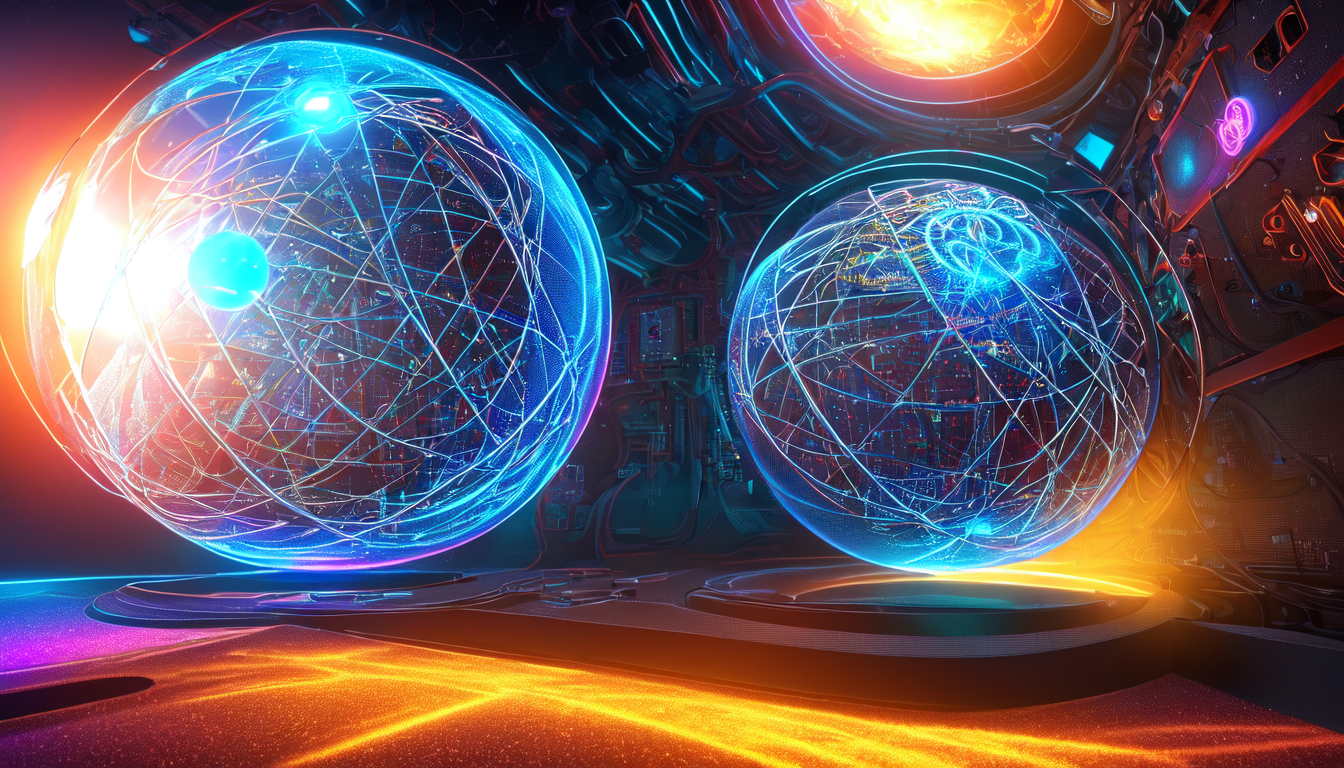Microsoft and Quantinuum recently announced that they achieved an incredible breakthrough in quantum computing by reaching Level 2 – Resilient reliable logical qubits. What does that even mean? We’ll dig into that! But first, lets consider the following key statements from Microsoft and Quantinuum articles announcing this achievement.
Quantinuum’s System Model H2 becomes the first quantum computer to advance to Microsoft’s Level 2 – Resilient phase of quantum computing – an incredible milestone. Until now, no other computer had been capable of producing reliable logical qubits.
Quantinuum.com
For fun, I’ll cover some fundamentals of quantum mechanics and explain what makes quantum computers so much more powerful, yet more fragile, than classical computers.
By applying an innovative qubit-virtualization system to ion-trap hardware, Microsoft and Quantinuum were able to create four highly reliable logical qubits from only 30 physical qubits, while demonstrating an 800x improvement in error rate.
Microsoft Azure Quantum Blog
I’ll dig into what an “ion-trap” is and why I believe it’s working so well. We’ll also get into “qubit-virtualization” and “logical qubits” vs. “physical qubits”.
That sounds like a lot of technobabble to process, but I’ll do my best to break down these complex and highly ambiguous concepts in a way that anyone can comprehend. I won’t go as far as to say “understand”, since the quantum realm is kooky A.F. and I doubt anyone really understands what’s actually happening within the quantum soup that makes up our reality.
Why am I doing this?
Two reasons:
- I’d like to use this historic milestone as a reason to formally document and share my own understanding of quantum computing, even if no one else reads this.
- Breaking down highly complex technical concepts into something that non-technical audiences can understand is an important skill in my line of work, so this is good practice for me.
Why is this achievement so important?
Consider the impact that computers have on our lives today (2024). They are literally embedded in everything we do. The main thing we need to be aware of is that these are now known as “classical computers”, because they’re officially the old way of doing things.
Compare the first vacuum tube-based computer used by the U.S. Military in 1945, called “ENIAC“, to whatever device you’re reading this on. It’s clear that the move to using transistors led to smaller and more reliable technology like our phones which are insanely more powerful!! But, they are still classical computers.
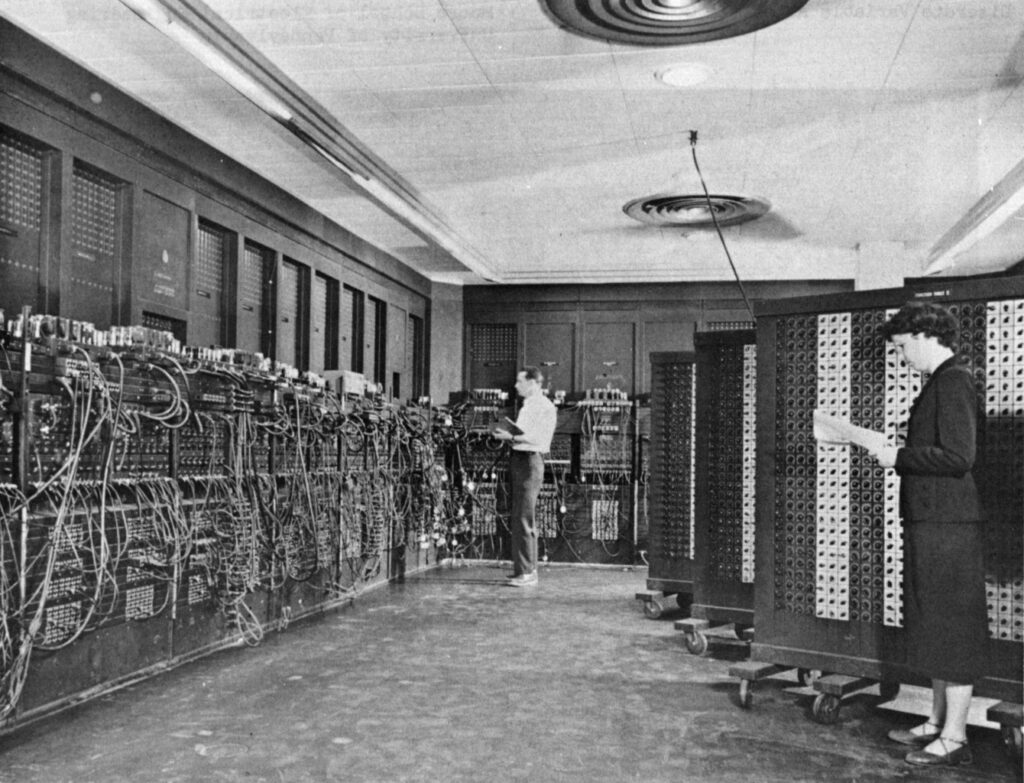
Today, Quantinuum’s System H2 Ion Trap, shown here:
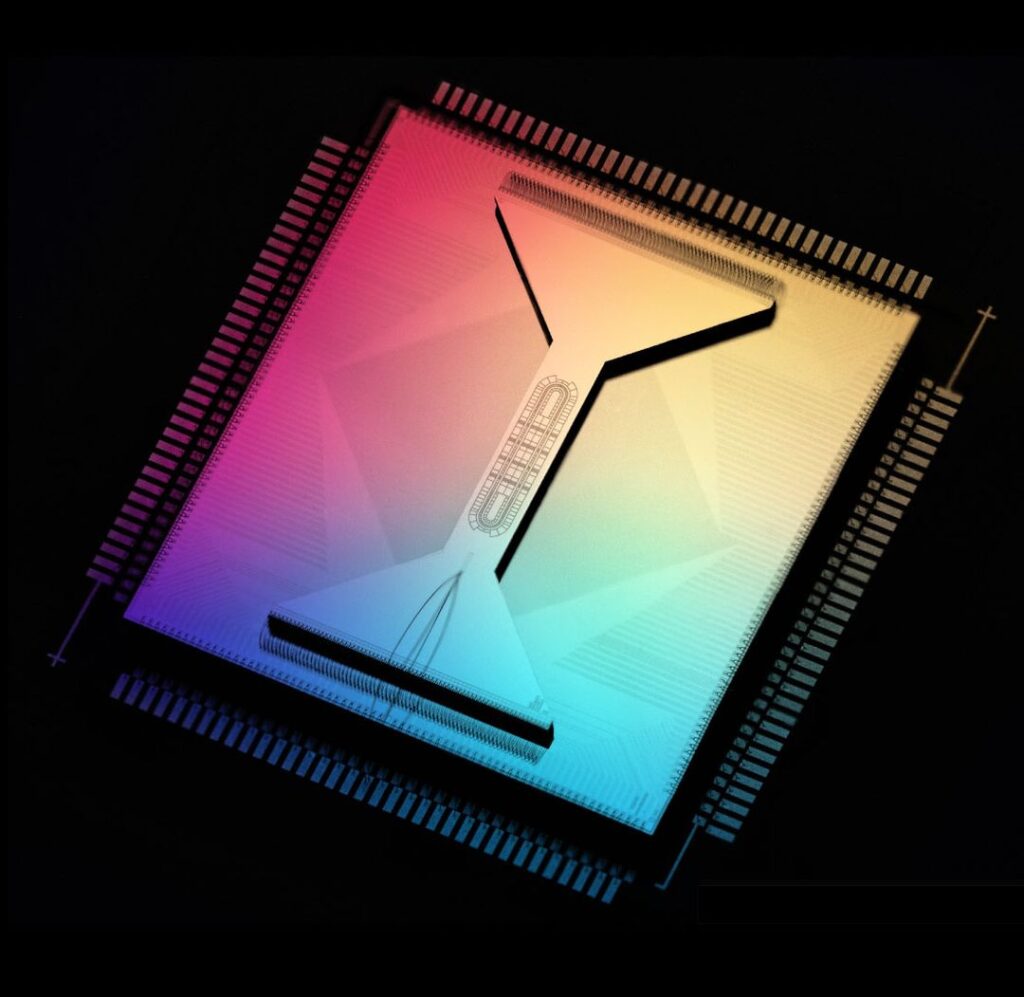
…has to sit inside this chamber in order to provide a stable enough environment, similar to outer space, to manage “noise” at a quantum level:
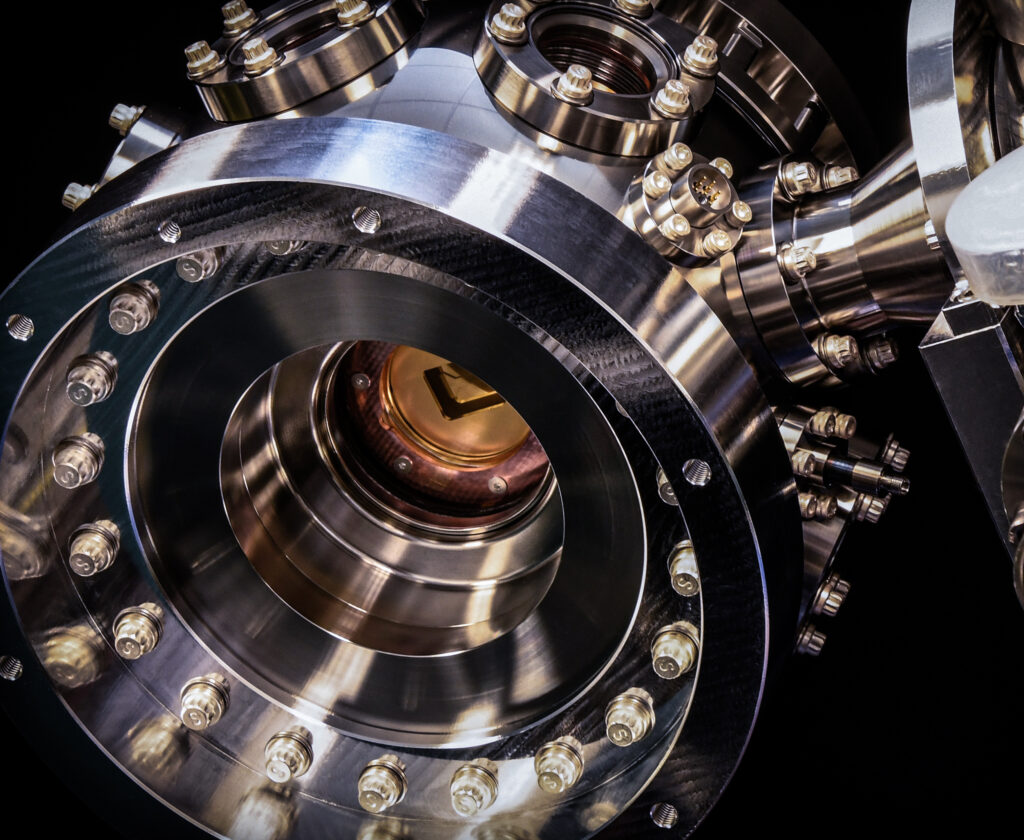
Even within this extreme environment intended to slow the intrinsic dance of subatomic particles, which we experience as matter, the noise is enough that we are currently in the noisy intermediate-scale quantum (NISQ) era of quantum computing. I personally feel this is the equivalent to the vacuum tube-based processor era.
What will technology look like when we move on to a new era where these chip sized traps no longer require their outer hardware to be stable? Imagine combining unfathomable computational power with future AI models and you can begin to envision our inevitable, yet exciting future!
To help clarify these concepts of computational power and the “noise” that’s such a problem in this field, let’s dive into quantum mechanics for a bit.
Classical vs. Quantum
Classical computers are very straight forward. Resistors are binary and can only be in either an “on” or “off” state. Like a classical bit, which is either 1 (on) or 0 (off). Classical computers have to process this binary data at such an extremely fast rate that the calculations behind showing you the period at the end of this sentence as it scrolls up the page is something we often take for granted.
Quantum qubits on the other hand aren’t so simple. In case you haven’t learned much about quantum mechanics, our world at a subatomic level follows a different set of rules. In quantum mechanics, the qubit is both “on” and “off” (and every possibility in between) at the same time, which is called superposition.
Superposition is where the computational power of qubits comes into play! It’s not just evaluating an “on” or “off” state, it’s evaluating every possibility between 0 and 1 at the same time.
Schrödinger’s cat is a popular, yet slightly morbid, thought experiment where a cat in a box is both dead and alive when the lid is shut. Only the act of observing (measuring) the cat collapses the quantum probability wave function into what you experience as reality. That collapse into a single physical state is called decoherence.
One of the most popular demonstrations of the fundamentally probabilistic nature of quantum mechanics is the double slit experiment, which helped us realize that photons can behave like either particles or waves. Here’s an image of light from a green laser passing through two slits 0.4mm wide and 0.1mm apart.

You can see the diffraction happening, which is exactly what you see when waves cross paths.
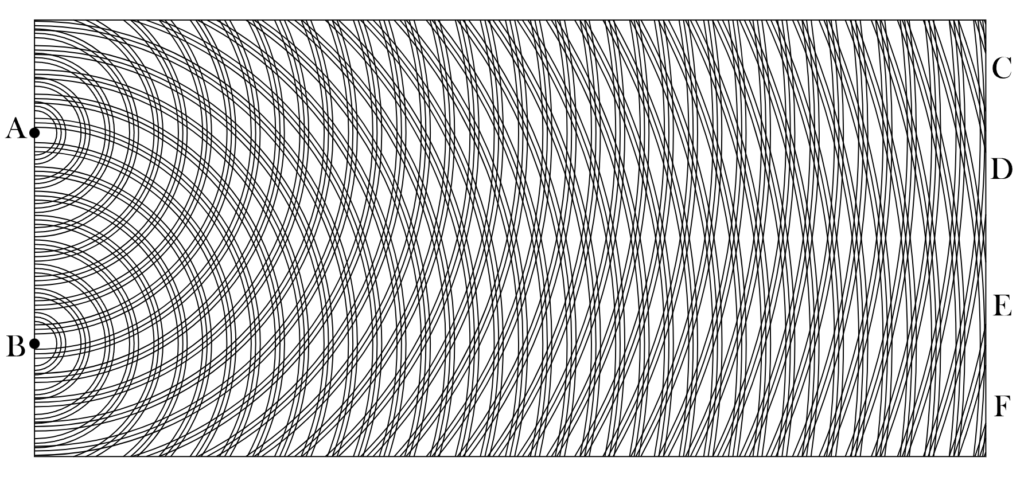
The strange thing is that the what we’re seeing here is crap-tons of photons all at once…

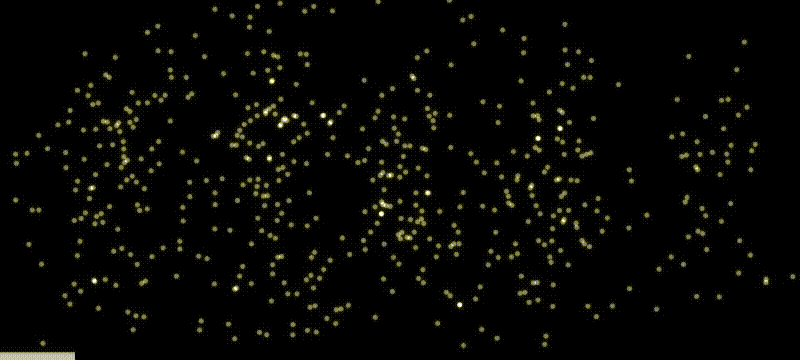
While in the animation above, you can see what happens when you only allow a single photon particle to pass through at a time. The particles themselves travel through the slits, but still follow the wave diffraction pattern as they continue their journey of probability until they’re finally measured – the dot that we observe.
If you’re confused, then I have you right where I want you! This stuff can be mind numbing.
The main take away here is that subatomic particles exist within a cloud of potential, and the act of conscious observation (measurement), is what determines the path the particle has taken. This idea can make you question reality!
Here’s a fun video I found on Wikipedia that will summarize what we’ve covered so far.
Two additional details come out of this video that we’ll need to continue on our journey: Rabi oscillations and the fact that quantum objects are never completely isolated, which is a major contributor to the “noise” I’ve been referring to.
Rabi oscillations are the basic process used to manipulate qubits. These oscillations are obtained by exposing qubits to periodic electric or magnetic fields during suitably adjusted time intervals. This finally leads us back to Quantinuum’s System H2 trap!
We will have to poke at a one more quantum process later, but I’ll let all that sink in for now.
A Race Track Trapped-Ion Quantum Processor
Next, let’s look at the core design of Quantinuum’s ion-trap, which is the race track looking contraption at the center of their chip.
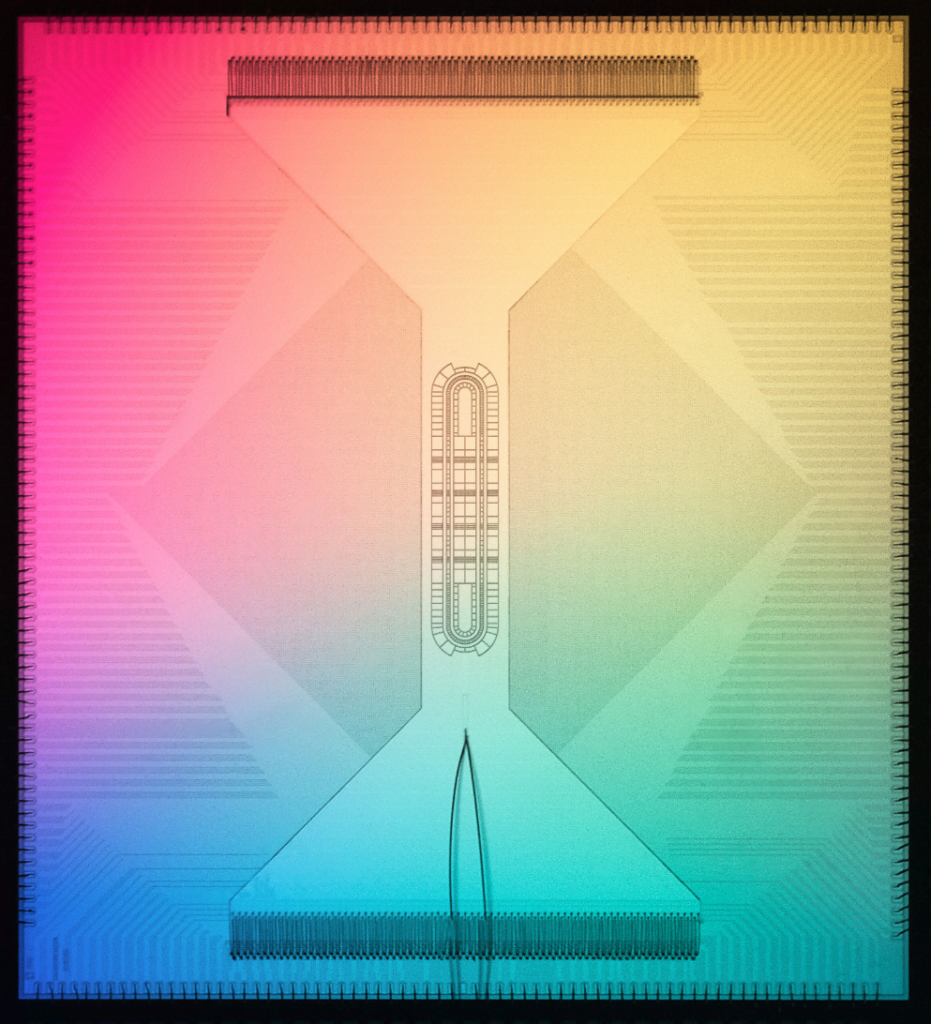
Here’s a diagram of this ion-trap, which comes from the white paper Quantinuum published on arxiv.org. I’ll provide the brief summary of this diagram directly from that publication.
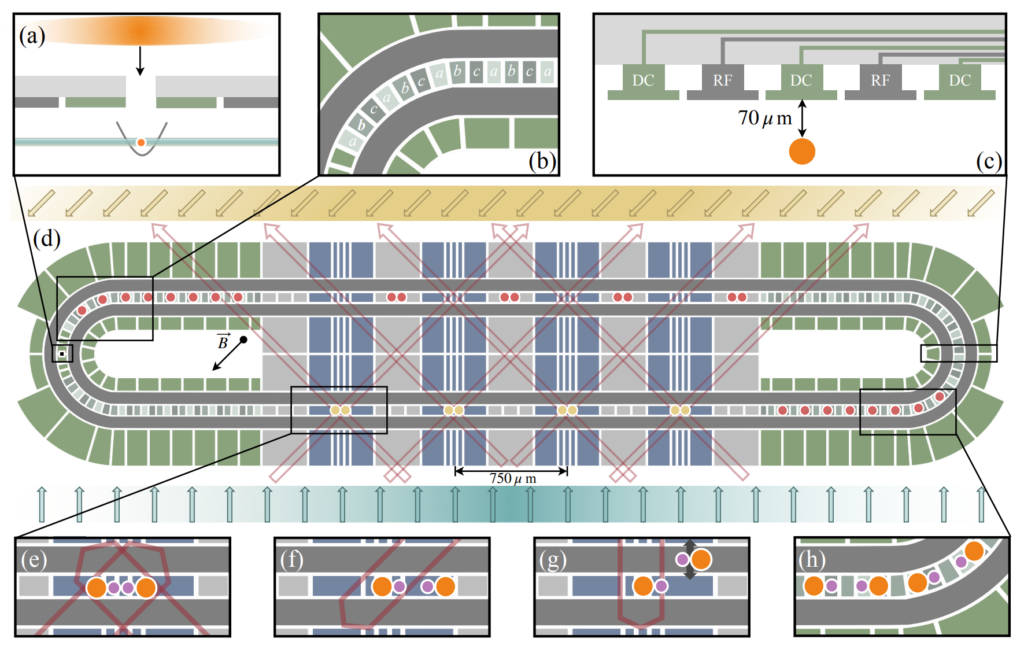
- a) A beam of neutral atoms are introduced into the trap.
- b) An abc tiling of electrodes is used like an electromagnetic conveyor belt to transport particles.
- c) Radio Frequencies (RF) are used to trap ions within a tunnel.
- d) Green curved zones are conveyor belt regions for ion storage. Bottom blue zones used for quantum operations, while top blue gate zones are used for sorting. Yellow circles represent qubits that are gated, while red circles represent qubits sitting in storage during gates. Yellow arrows indicate the Doppler sheet beam direction while blue arrows indicate the Doppler repump sheet beam direction. Note Barium ions are omitted for simplicity
- e) Ion configuration and beam direction for 2Q gates. Large orange circles represent positively charged Ytterbium ions, while smaller purple circles represent positively charged Barium ions.
- f) Ion configuration and beam directions for 1Q gates on left.
- g) Ion configuration and beam directions for state preparation and measurement (SPAM) operations on left with micromotion hiding on right.
- h) Storage ion configuration in conveyor belt region.
Umm…Yeah that’s a lot to take in! However, some key details like combining two ion species as a “physical qubit” in (e) becomes a key component to the stability of the H2 system! The physical qubit being the actual ion crystal itself.
My Theory
I still need to read through the full white paper and absorb all the details, but at this point I have a theory that one of the main reasons this approach is working so well in a physical qubit is that they’re combining ions of Ytterbium and Barium (metals) and using the state of that crystal as their measurement.
Imagine trying to control and measure the spin of a single photon(light)-based qubit! Creating a crystal ion using metallic atoms makes perfect sense for a qubit that you want to control with electromagnetic fields. To me, it seems that using two particles would also make it more stable, and much easier to manipulate.
We also have to consider the fact that they “hide” micromotion in (g), which helps reduce the error rate. I believe this relates to the effect we’ve seen as resistors have shrunken into the subatomic realm, where quantum fluctuations lead to “leakage”, which is where an atom can jump across boundaries that are super thin.
Let’s move on from this now and go over how the virtualization of these physical qubits leads to 800x improvement in errors.
Qubit Virtualization
The Microsoft team was able to optimize their error correction, reducing the original estimate of needing 300 physical qubits, to being able to create four logical qubits with only 30 physical qubits. This allowed them to work within the boundaries of Quantinuum’s 32-qubit H2 quantum computer.
There’s an animation on this Microsoft article (that doesn’t work on mobile) which helps you visualize what’s happening in the Qubit Virtualization process that creates a “logical qubit” out of physical qubits. It basically shows that they wrangle 30 physical qubits and use those to create a single logical qubit. Microsoft’s Qubit Virtualization system must be running some type of algorithm that classifies any quirky measurements as noise and only keeps the obvious signal from the majority of the physical qubits being measured.
Microsoft describes the inherent noise of a physical qubit similar to the environmental noise on an airplane and their improvement being equivalent to putting on noise canceling headphones. That’s roughly the same as a 29 dB signal improvement, which is impressive!!
Entanglement is another quantum concept that is strange enough that Einstein called it, “Spooky action at a distance.” Entanglement means that multiple particles can be “linked” in a way that allows them to behave exactly the same – no matter how far apart they are. Microsoft mentions leveraging this process to help correct errors in this white paper, which is another document I admittedly haven’t fully processed. There’s another animation in this article that helps you visualize it as them entangling pairs of physical and logic qubits, then comparing the discrepancies between each pair. Maybe the fact that they’re entangled helps strengthen the signal?
Wrapping Up!
With all that said, Microsoft has successfully demonstrated several fault-tolerant protocols that work well with Quantinuum’s trapped-ion processor, which is already a solid design in the physical realm of quantum computing. As they continue stabilizing quantum computations, we’ll be moving closer and closer to quantum computers becoming the norm in our day-to-day lives!
WOW! I didn’t expect this article to be so long and mind numbing to write, but I do think it was a good exercise for me. I also hope this helps shed some light on how important this milestone is in the progression of quantum computing. If you’re new to the idea of quantum computing, or quantum mechanics in general, I hope this article provided a decent introduction to the topic. There are tons of resources out there, so if this was even remotely interesting, I encourage you to continue learning as much as you can. Especially if you’re aiming to be ahead of the curve as we move into a new era in computing.
Header Image
This article’s Stable Diffusion header image was a lucky draw, since it was one of my first attempts and felt like the model actually nailed the inside of a trap. All other attempts after this were simply not what I was looking for.

Prompt: professional 3d model A scene within a quantum computer where the focus is on a bloch sphere that represents a qubit, which is trapped within an electromagnetic box. Colorful, dramatic lighting . octane render, highly detailed, volumetric, dramatic lighting
Negative prompt: ugly, deformed, noisy, low poly, blurry, painting, people
Steps: 20, Sampler: DPM++ 2M Karras, CFG scale: 7, Seed: 535553957, Size: 1344×768, Model hash: 9e9fa0d822, Model: dreamshaper_331BakedVae, Style Selector Enabled: True, Style Selector Randomize: False, Style Selector Style: 3D Model, Version: v1.6.1

